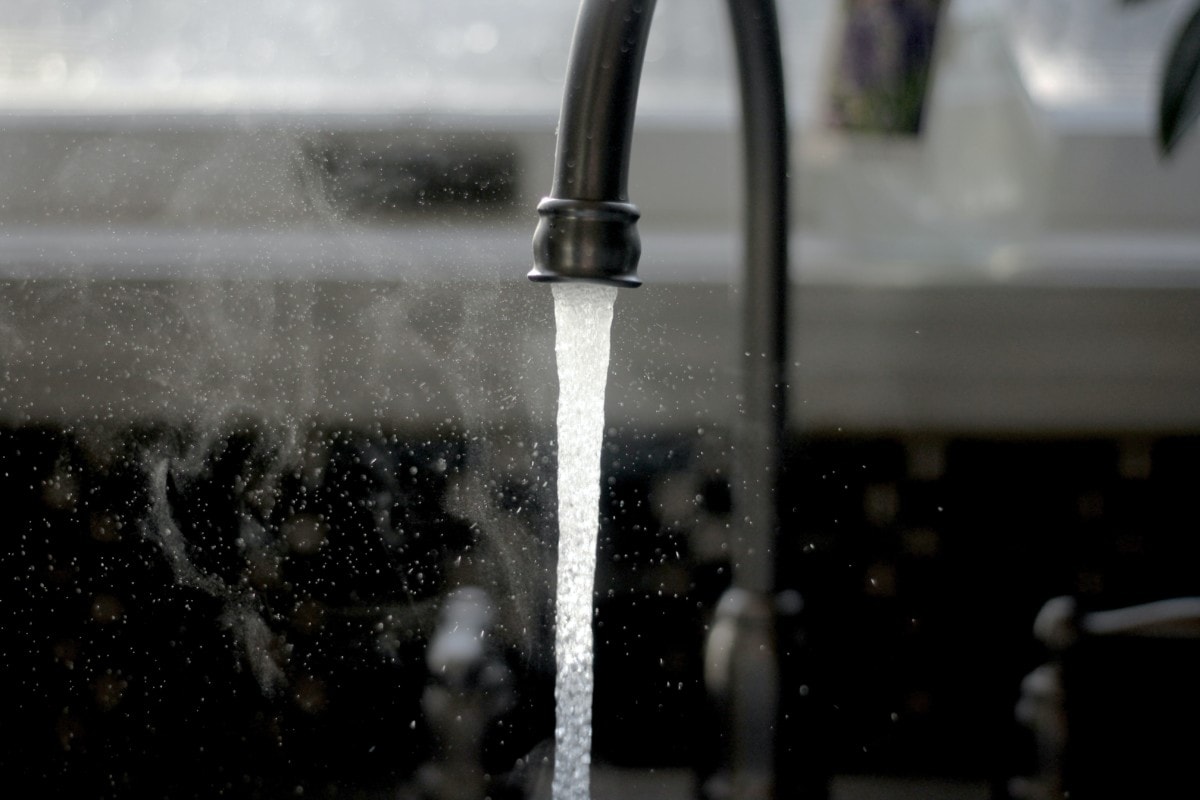If you are planning on selling your home, you might be wondering if you need a septic inspection. Fortunately, this is not uncharted territory. In fact, more than 1 in 5 homes in the United States rely on a septic system to dispose of their wastewater, and in New England states like New Hampshire and Maine, over half of all homes are served by a septic system. Houses with septic systems are bought and sold every day. So, read on to find out what you can do to prepare your home, and septic system, for sale.

What is a Septic System?
A septic system is a type of wastewater treatment and disposal system that is often used in areas where public sewage systems are not available. Typically, these are areas that are rural or on the outskirts of suburban and urban areas.
There are many different types of septic systems, depending on factors such as what part of the country you live in, your soil type, how close the house is to specific bodies of water, the slope of your property, and how big your lot is just to name a few.
Typically septic systems consist of a watertight tank where raw wastewater from your home (think toilets, showers, and sinks) begins its journey to disposal. These large tanks are buried underground and can be accessed by covers which are called risers.
How waste is processed through a septic system?
Wastewater from the house enters the tank through a pipe called an inlet. Heavier solids, also known as sludge, sink and accumulate on the bottom of the tank and need to be pumped out regularly by a septic professional. Lighter materials, like grease, float and are expelled out of the tank for further treatment and dispersal.
Once the liquid waste, which is called effluent, is discharged from the tank, it enters lateral lines in the drain field. These lines are plastic pipes that have holes in them. As liquid waste is pushed through the lines, the liquid filters through a layer of gravel that the pipes are set in, and continues to be dispersed and filtered through the various layers of soil. Lateral lines are set underground and ideally on a downward slope. This measure is taken to prevent wastewater runoff.
Lateral lines are also ideally sited on a slope to prevent water from ponding over the area where the lines are located during the rainy season. If water were to collect in the drainfield, the lines could become flooded themselves, causing water to back up into the tank and overfill it. If this were to happen, it could lead to wastewater flooding up into the drains inside your home.
How often should you get a septic inspection?
Taking care of your septic system isn’t complicated or difficult. The best way to ensure your system is in peak operating condition is to have it inspected at least every three to four years by a septic professional, and yes, you should have your septic system inspected when you decide it’s time to sell.
By having your septic system inspected frequently, you will be knowledgeable of any problems the system may have, or better yet, catch and correct any issues before they become a problem.
What do septic inspectors look for?
There are several things a septic system inspector will be looking for when conducting an inspection. Some important information the septic professional will need to know is the age of the system and the date the tank was last pumped. This will give them an indication of how full the tank may be. Remember, septic systems should be pumped about every two years.
They will also inquire as to how many people are living in the home. The number of individuals in a family can grow or shrink over time and the septic tank needs to be the correct size for the number of people it is servicing. The bigger the household, the bigger the tank needs to be to adequately process the wastewater.
The inspector may also perform a sewer scope inspection to determine how much sludge is in the tank. Sludge should not account for more than 33% of the tank’s total volume, and if it does, the tank will need to be pumped.
They will check the lids that sit at ground level (risers) to make certain they are securely in place and that they have no cracks. If cracks are present, water could leak into the tank and could contribute to the tank overfilling. The person doing the inspection will also make sure the tank is watertight. It is very important that groundwater isn’t getting into the tank and that wastewater isn’t leaking out.
The inspector will also check the drainfield too. They will make sure there isn’t anything like trees, streams, or wells located close to the drainfield. Tree roots and other landscaping seeking out a water source can damage lateral lines, thereby compromising the septic system.
It is important that you keep records of all inspections that are completed on your septic system and keep track of each date you have the tank pumped.
5 signs of septic tank problems and when you’ll need a septic inspection
Here are some common signs that your septic tank isn’t functioning properly:
- There is wastewater backing up into your home through your sinks and toilets.
- You hear gurgling sounds coming from the plumbing in the house or you observe tubs and sinks draining slower than usual.
- There are damp areas or water standing near the tank or in the drainfield.
- In dry weather, you have bright green grass growing over the top of the tank or drainfield.
- You smell a sewage odor around the area of the septic tank or out in the drainfield.
A septic system that has failed is dangerous to the health of humans and animals alike. Owners need to be aware of the signs of potential septic system failure and respond quickly by contacting a septic system professional to perform an inspection to determine the nature and severity of the problem.

5 reasons why a septic system might not work properly
Once your septic system has been designed and installed properly and is in the correct location, it’s up to you to maintain the system. Some reasons why a system might not function properly could be due to:
- Putting items other than toilet tissue and human waste down the drain. Make sure to dispose of everything other than toilet tissue and waste in the trash.
- Allowing vehicle traffic (or livestock) on top of the tank and lines. Know where your system is located, including the drainfield, and keep traffic and livestock from damaging the components and/or compacting the soil surrounding the system.
- Pouring chemicals down the drain to open a clog. Instead, always try a snake or hot water. If that doesn’t work, contact a septic system professional.
- Pouring cooking grease or oils down the drain. Instead, allow them to cool and harden, and then throw them in the trash.
- Making frequent use of the garbage disposal. Instead, compost what you can and throw the remaining kitchen waste in the garbage.
How much do septic inspections cost?
The cost to have a septic inspection is determined by the size of the tank and how extensive the inspection is. Typically, a basic inspection ranges from $350 to $650 depending on where you live. Keep in mind that to inspect the tank, it must first be pumped, which is typically included in the price above.
How long does a septic tank inspection take?
A septic tank inspection can take anywhere from a little under one hour up to three hours depending on how elaborate your system is, and whether any problems are found. This includes the pre-pumping inspection, pumping, and the inspection that is completed once the tank has been pumped.
How to prepare for the septic inspection
To prepare for a septic inspection, gather all paperwork relating to previous inspections and times when the system has been pumped. Having all the paperwork readily available for the inspector can serve as a checklist to ensure that they don’t inadvertently miss evaluating portions of your system.
Do not, however, have the tank pumped in preparation for your inspection. The inspector can gain vital information from assessing the system before cleaning out the tank.
If the septic system requires repairs, who pays for it, the buyer or the seller?
Buyers and sellers often want to know who is responsible for paying for septic system repairs during a real estate transaction. This is a great question. The short answer is that repairs to the septic system typically fall to the seller, but like other repair items found during the home inspection phase of a sale, repairs to the septic system are negotiable between the seller and the buyer.
As the seller, you can choose to complete all repairs yourself, or you can do nothing. You also have the choice to negotiate the repair cost with the buyer or give the buyer a credit at closing equal to the amount necessary to complete the repairs, depending on the housing market and how much power you’ll have when it comes time to negotiate.
A great way to cut back on surprises when selling your home is to have a septic system precertification done prior to ever listing the property for sale.By having this done before listing your home, you will be aware of the current condition of the septic system and any repairs that may be needed. With this information, you can complete the repairs, and thereby position your septic system, and house, in the best saleable position possible.
How long do septic systems last?
Although the average lifespan of a septic system is between 20 to 30 years, the number of years of service you get from a system depends on how well your septic system is maintained.
Some systems won’t last 20 years due to any number of potentially life-shortening factors. Such as allowing cars or trucks to drive on top of the septic system, planting trees or landscaping too close to the system so that their roots cause clogs, not pumping the tank or having the system inspected regularly, and overflooding the system by having more people consistently use the system than what the system was built to handle.
Is it hard to sell a house with a septic system?
Concerned about selling your house with a septic system? Don’t be. Remember, homes with septic systems make up about 20 percent of all homes in the United States right now. So, unless your system is at the end of its lifespan, or has never been maintained and is failing, you should have no concerns about selling your house.
Can I sell my house with a failed septic system?
Check with your real estate agent because, in certain parts of the country, it is illegal to sell your home if the septic system isn’t functioning properly. In that case, you will want to determine what is wrong with the system and pay to have a professional correct it before a sale.
If you live in a state that does allow houses with failed systems to be sold, you will probably have to discount the selling price to reflect the issues with the system and have repair or replacement bids in hand to show prospective buyers. This will allow buyers to know exactly what is wrong with the system and what it will take to get it functioning effectively.
If a buyer is obtaining financing to purchase your house, it is likely their mortgage company will want proof any repairs needed on the system have been completed and that the septic system is up and running prior to closing on the home.
When in doubt, consult a septic inspector to help you understand your system’s overall health
You can locate a septic tank professional near you to get a better understanding of your system’s overall health. And remember, regular maintenance and inspections will go a long way toward your system being in top shape when it comes time to sell your home.



























 United States
United States Canada
Canada